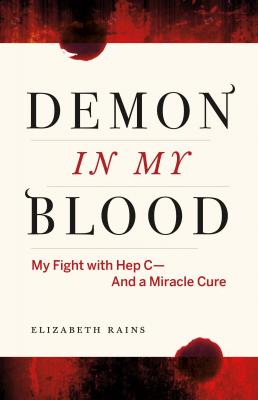Demon in My Blood. Elizabeth Rains
Читать онлайн.| Название | Demon in My Blood |
|---|---|
| Автор произведения | Elizabeth Rains |
| Жанр | Биографии и Мемуары |
| Серия | |
| Издательство | Биографии и Мемуары |
| Год выпуска | 0 |
| isbn | 9781771641715 |
To everyone who has ever been infected with hepatitis C, and to Al for his patience and love throughout my illness
CONTENTS
1968 and 1970: Druggies
1968–1974: Sex
March–June 1969: Desertion
Early July 1969: Canyon
July 1969, Night: Posse
July 1969, Next Day: Shots
July–September 1969: Rocks
Appendix: My Good for the Liver List
INTRODUCTION
WHEN MY DOCTOR said, “You have hepatitis C,” it felt as if I had been propelled onto another planet. It was a desolate place with no landmarks.
I told my husband about the diagnosis, but no one else. Two days later a friend visited my home. Sitting on the beach with her, talking about her teaching project and about the best ways to moor a boat, I gave her less than half my attention. The rest of my mind tumbled in outer space. I thought about my disease all the time.
I was a journalist, so I immersed myself in research. I reasoned that by doing what I habitually do, I could stay objective and calm my fears about my illness. I read everything I could about hepatitis C and talked with everyone I could find who was an expert on the disease.
Eventually I contacted a publisher who wanted my story. My research continued for more than a year after that, past those early, fearful days, throughout my treatment, and beyond. The treatment, with direct-acting antivirals, was quick. The side effects were next to nothing. I was among the very first patients who were prescribed a groundbreaking non-interferon drug combination without participating in a clinical trial. My only big problem was the cost of the drug—close to $120,000 for the twelve-week regimen. But it worked. I am now 100 percent free of hepatitis C.
While writing this book, I met dedicated researchers who vowed to eradicate hep C from the earth, and I met dozens of people who suffer or have suffered from the illness. Most of the people with hepatitis C were baby boomers, past IV drug users, or both. Without exception, I found the researchers to be sincere about helping patients and about creating a future free from hepatitis C. I found the people who had contracted hep C to be philosophical and often charming and funny.
After the initial jolt of diagnosis, I first turned only to my husband and daughters for support. After a few weeks I began telling close friends about my disease. Most of them listened patiently as I expressed my fears about hepatitis C. They gave me comfort when I desperately needed it, and I will feel bound to these friends forever. But not all of my friends gave me comfort. Several showed prejudice about the disease or just didn’t want to hear about it. Between my diagnosis and when I was declared disease free, I learned that some friends are friends from the deepness of their heart and others are friends from the surface of their mind. I didn’t fault the surface friends, but I no longer felt close to them. I stopped talking with two of them entirely.
I also learned about greed. Principals at drug companies had set astounding prices on the latest hep C drugs. In addition to the simeprevir-sofosbuvir drug combination I took, many other easy hepatitis C treatments have emerged. Today, patients can take one pill a day instead of two, sometimes for fewer than twelve weeks. Still, the cost of treatment is more than most patients’ yearly income. Insurance plans in the U.S. and provincial drug plans in Canada continue to refuse payment to many patients. Prices close to $1,000 per pill have generated scads of negative publicity for the drug companies, which have reacted by playing shy with journalists. I got around this as best I could and connected with a few key people in the companies. They provided valuable background information.
Some people I interviewed who have been afflicted with hepatitis C asked that their names be withheld. I have honored their requests by using pseudonyms. In some instances, I have altered other identifying information. I have stuck as close to reality as possible while aiming to respect people’s wishes. Other sources’ identities have been withheld for personal reasons.
I talked with people and looked at research from all over the world. However, most of my sources are based either near Vancouver, British Columbia, or in San Francisco. Vancouver is a typical Canadian city when it comes to hepatitis C treatment, and has been home to many clinical trials of hepatitis drugs. I live close to Vancouver and underwent treatment there. San Francisco, however, is not a typical American city in its approach to hepatitis C but a progressive
